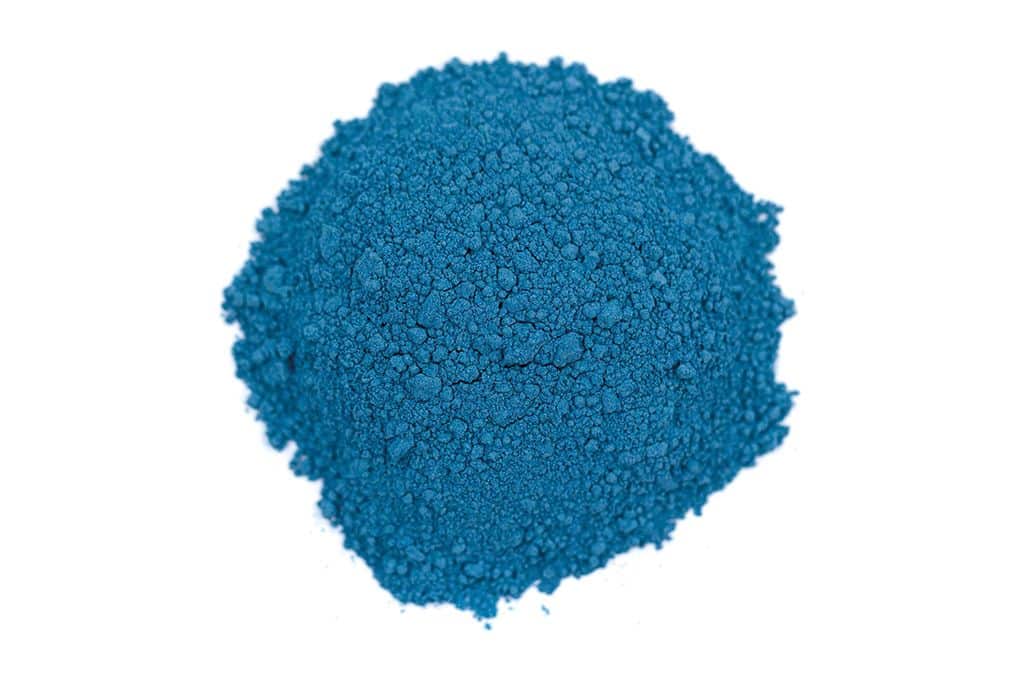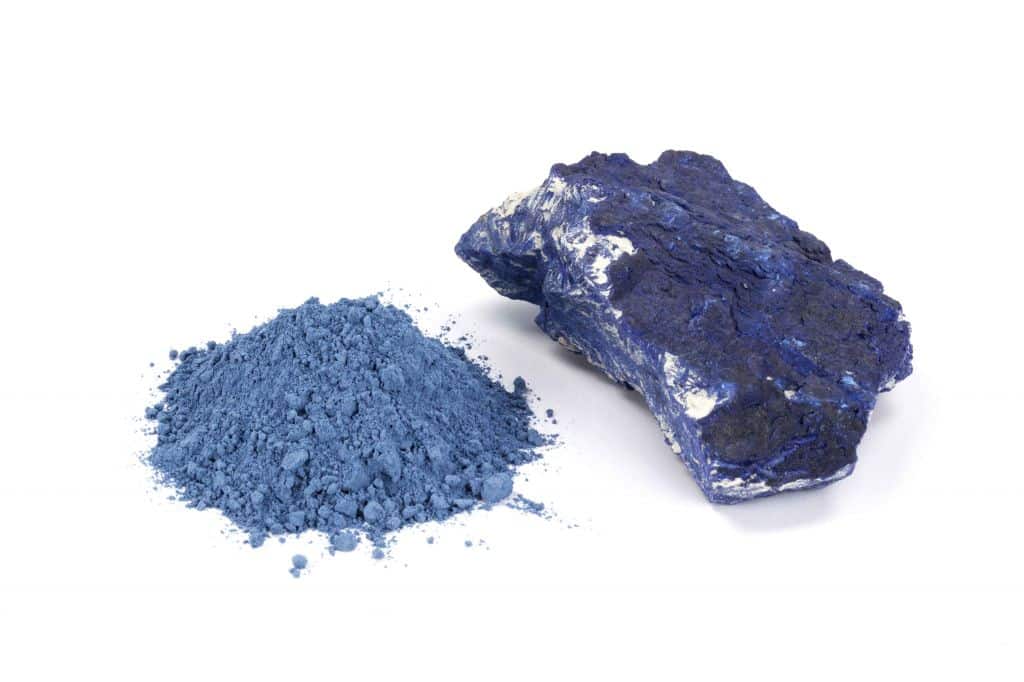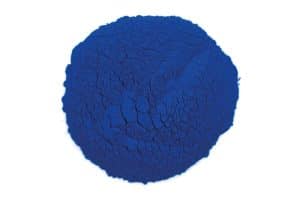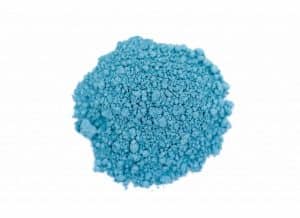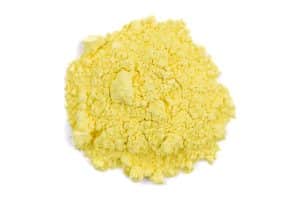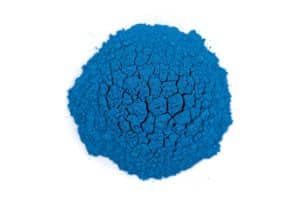Description
- Chemical composition : 2CuCO3.Cu(OH)2
Azurite, is a natural basic copper carbonate.
The mineral occurs in various parts of the world in secondary copper ore deposits where it is frequently
associated with malachite, a green basic copper carbonate.Azurite may have been employed as a pigment as early as the Fourth Dynasty in Egypt. Azurite was no
doubt the most important blue pigment in European painting from the fifteenth to the middle of the
seventeenth century and in paintings of that period it is found more frequently than ultramarine. In fifteenthand sixteenth-century European easel painting natural azurite was often used as an underpaint for
ultramarine. Azurite was also widely used as a blue pigment in wall paintings in Central Asia and in
paintings by the Ukiyo-e School in Japan. The invention of Prussian blue in the eighteenth century seems
largely to have displaced azurite from the palette in Europe. Like other mineral pigments, it has been
prepared from carefully selected material by grinding, washing, levigation and sieving. Azurite is cristalline
and for use as a pigment is ground rather coarsely because fine grinding causes it to become pale and weak
in tinting strength. Areas of dark, coarsely ground azurite on paintings can often be recognized by their
sandy texture and by their thickness.
Traditionally it appears to have been mostly used in a tempera medium because in oil it would be dark and
muddy and would not have the sparkle that it has in tempera.
We offer an azurite treated in a lavish process that was developed by a customer of ours – Michael P. In this
prepared state, it can be used in an oil medium without darkening and turning green. The azurite is prepared
by washing it in an egg yolk medium thus produces a selection of the particles according to their size while
simultaneously coating them in a protein. Recent analysis of old paintings by the IRPA in Brussels have
found almost all copper pigments to be coated with proteins.
This procedure of particle separation offers extremely beautiful and brilliant hues.
It is not uncommon to find scattered particles of malachite and cuprite, a red mineral (Cu2O) because of the
close association of these three minerals. The proportion of the impurities influences the color of an azurite
paint film. Azurite is stable to light and normal atmosphere.
There is evidence that (Laurie) Hungary was the principle source in the sixteenth century until the middle of
the seventeenth century when the country was invaded by the Turks and the supply was cut off.
Please call for further information and availability.
